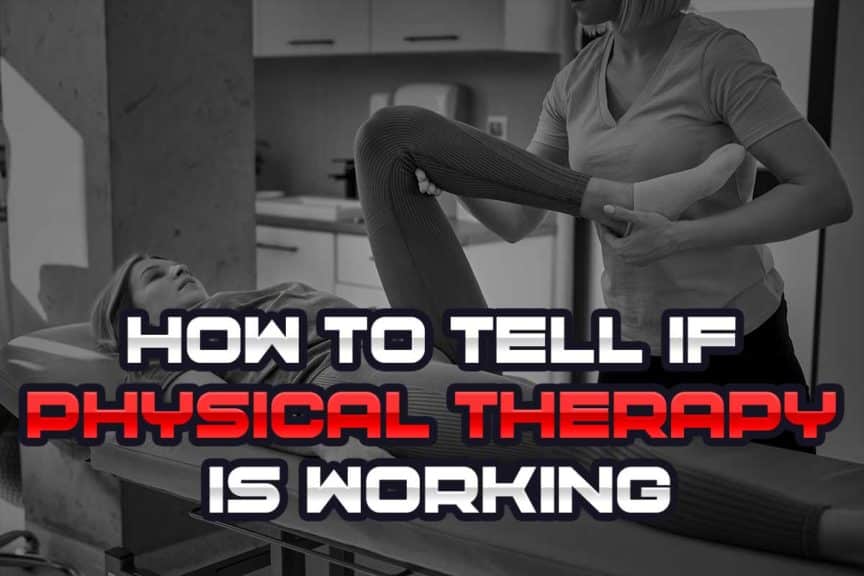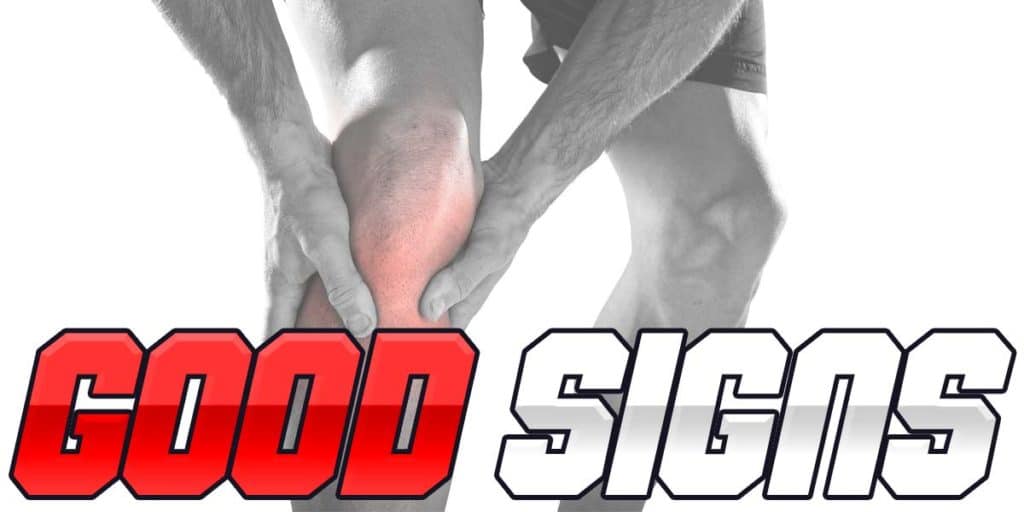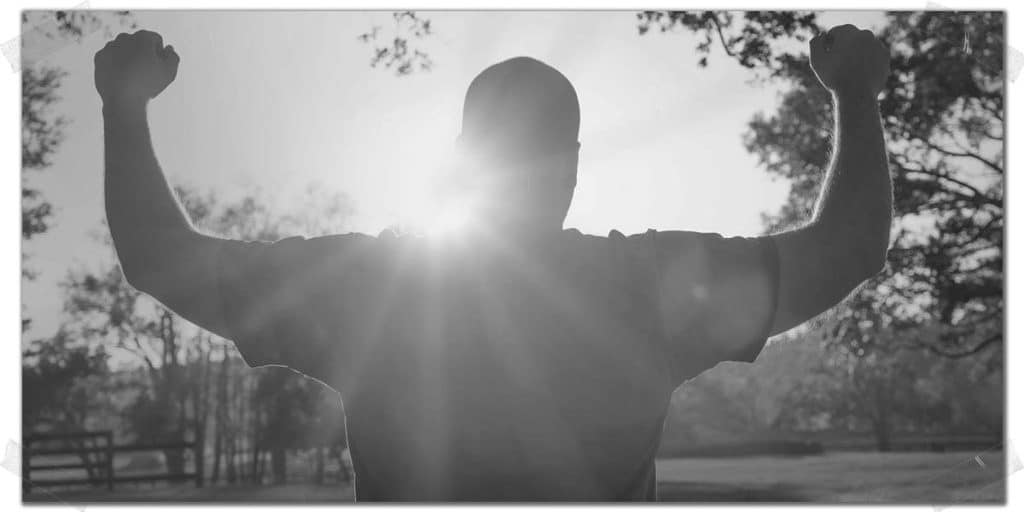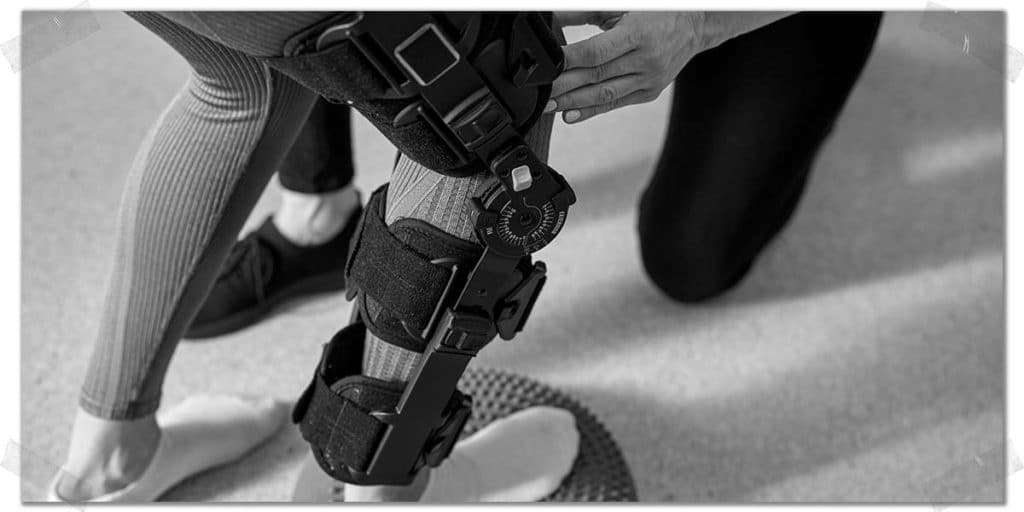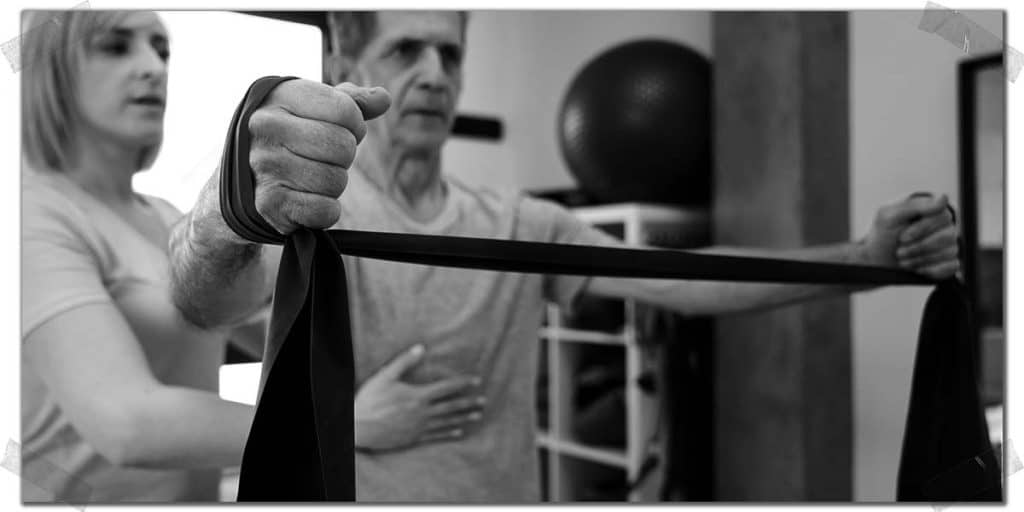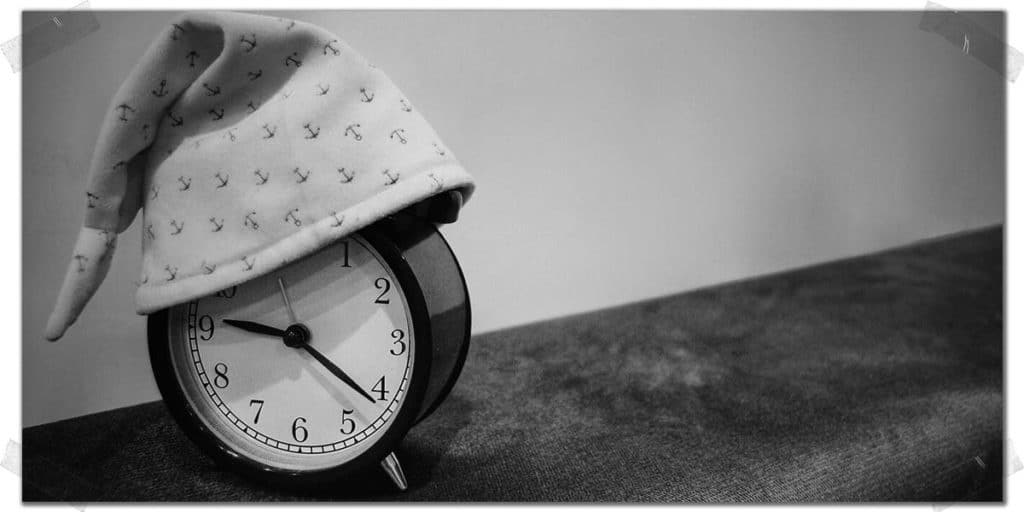If you’re going to physical therapy, you absolutely want to get the most out of the experience. An optimized course of physical therapy will not only help you to make a quicker recovery but also a recovery that is more complete. But it can be hard to tell if you’re on an optimized course of recovery or not. That’s why in this article, I’ll be going over the signs that signify your physical therapy is making a difference in your recovery.
Signs your physical therapy is working can include improved confidence in your physical abilities, improved functional capacity with daily activities, less frequent or intense pain, movement that is easier to perform, strength and mobility improvement, and better sleep and energy levels.
Of course, there are more signs than what’s briefly mentioned above. Much of it will depend on your overall condition and other personal factors. Nonetheless, what I’m presenting in this article are some of the most universal signals that your physical therapy is working and helping to move you in the right direction towards recovery.
You’re going to want to read the details below, as the more informed you are on picking up on these signs and signals, the better off you’ll be for ensuring you’re on the most optimal path possible towards recovery.
Related article: You’ll Get WAY More Out of Your Physical Therapy with These Tips
Depending on your particular injury or condition, some signs of healing and recovery are relatively straightforward. These can include visual changes to the injured or involved area of the body, such as:
- Reduced swelling or edema
- Reduced bruising or discolouration
Other rather evident signs of healing can include less pain when touching the affected area or when moving the area. These are likely signs that you’re aware of, though. I’ll expand on them in some unique ways below, and I’ll also cover some of the much less recognized signs that can be rather telling of positive change taking place from your physical therapy.
So, let’s dive into it!
Sign 1: More overall confidence
Confidence is absolutely everything in the world of physical rehabilitation and recovery. If you don’t feel confident about your understanding of your injury, current situation, what the path towards recovery will involve, or what led to your situation in the first place, you’re likely to face a slower and less effective recovery process.
That’s because there’s evidence to suggest that the patients who best understand the nature of their situation (including their pain and dysfunctions) experience better outcomes than those who don’t.1–6
The rehabilitation process becomes much more intuitive when you have a more complete understanding of what your pain means, why it is occurring, and how to manage it. As a result, you’re much less likely to make costly mistakes that can prolong your recovery or worsen your pain.
Essentially, you’ll have a better understanding of activities or movements to stay away from and a better understanding of what to do more of for your recovery.
A critical component in the process of physical rehabilitation is education. Everything starts and ends with raising your awareness of the nature of your condition. So, if you’re feeling more confident with navigating the path forward, your physical therapy is absolutely working in this critical regard.
Sign 2: Improved functional capacity
For the sake of this article, functional capacity refers to your ability to effectively carry out physical tasks that serve a specific purpose for your daily needs. This could be a daily task such as walking up the stairs, carrying in a bag of groceries, picking up your child, etc.
Not all conditions that require physical therapy involve the presence of pain. As a result, it’s essential to have some markers to evaluate your recovery if your condition doesn’t involve pain. However, keep in mind that the signs in this section of the article are still appropriate for those who do have pain as well.
If you only judge the effectiveness of your current physical therapy treatment simply by “the presence of any pain,” you may get a false interpretation as to whether or not it’s working. You must also consider both the extent and frequency of your experienced pain.
The capacity for you to successfully achieve these physical tasks is not only dictated by how much or little pain or discomfort you may feel (more on that in a bit) but also by the ability of your muscles, joints, nerves, etc., to produce and tolerate the forces and positions they must endure in the process. Let’s look at these in a bit more depth.
Improved strength
Strength is your body’s ability to produce force from your skeletal muscles. If you notice that you can produce greater force with seemingly less effort, your strength is improving.
Whether it’s the strength required to do a challenging exercise in the gym or the strength required to go from a sitting to a standing position, your physical therapy is working if it’s becoming easier to do.
Improved endurance
Endurance refers to your body’s tissues (muscles, lungs, nerves, etc.) to resist fatigue (becoming tired) with repetitive or prolonged activities. It’s possible to have lots of relative strength within your muscles but little endurance — which is not ideal. You always want to have an ideal amount of both.
If you’ve been going to physical therapy and performing any required exercises or activities as part of your rehabilitation and notice that you don’t become tired as quickly when performing either your exercises or activities of daily living, your physical therapy is no doubt working.
Improved ranges of motion
Having all of the strength and endurance in the world doesn’t mean much if your joints and surrounding tissues won’t accommodate to the positions you need to achieve for your tasks.
Mobility and range of motion can be limited by pain (discussed in a bit) or stiffness. Regardless of the limiting factor for your ability to move into or through certain positions, if you find that you’re now able to achieve those same positions (or greater) with less effort or discomfort, take comfort in knowing that your physical therapy is working.
Sign 3: Changes in pain characteristics
You’re most likely aware that experiencing less pain and discomfort is an obvious sign that your physical therapy is effectively moving you down the road to recovery. But there are a couple other key points to be aware of and understand than just your perceived amount of pain.
If you only judge the effectiveness of your current physical therapy treatment simply by “the presence of any pain,” you may get a false interpretation as to whether or not it’s working. You must also consider both the extent and frequency of your experienced pain.
The path to recovery is very rarely a linear one. There will be ups and downs along the way. The key to knowing whether or not your therapy is helping is to look at the overall trend of your pain. So long as it is trending upwards, you’re moving in the right direction.
Pro tip: Not all hurt equals harm. There are many times in physical rehabilitation where specific types of discomfort can be a positive sign of healing taking place.
Regarding any pain: when your physical therapy proves to be effective, it will reveal a trend that shows two distinct patterns or trends. Let’s quickly look at each of these.
Trend 1: Your flare-ups aren’t as bad
If your condition involves the presence of pain, rest assured that bad days involving elevated pain levels will likely happen. The beginning phases of injury recovery tend to be the most painful, and while you want your pain levels to trend downwards, there might be days where it spikes upwards.
Don’t lose heart. Hang in there long enough to confidently determine if these pain spikes are trending downwards when they do occur (how long this might take depends on your personal situation). If they are indeed trending downwards in severity, you’ll know that your therapy is producing positive results.
In other words: when your bad days aren’t as bad as they used to be, good things are happening.
Tend 2: Your flare-ups aren’t as frequent
In addition to the severity of your painful spikes trending downwards, a downward trend in the frequency of your pain flare-ups is another telling sign that your physical therapy is paying off. When the bad days are becoming noticeably fewer and further between, you’re onto something good.
The changing nature of pain
In addition to the changes in pain intensity and frequency, changes in the type of pain you experience can often (though not always) be a sign of progress. As a quick overview:
- Pain that was once very sharp or intense in nature that now feels dull or achy is often a sign that positive changes are taking place.
- Pain that is less widespread and now more confined to within a smaller area can often indicate healing in certain conditions, such as with low back pain.
- Pain that is less easily provoked from physical activities, movements, or positions can indicate your therapy is effective.
Related article: Feeling Worse After Physical Therapy? What to Know (A PT Explains)
Sign 4: You’re sleeping better
Dealing with pain or physical disability can be highly distressing — both physically and mentally. Night time can often bring out the worst in physical conditions, either in terms of physical discomfort or psychological discomfort. When this happens, it can significantly impact one’s ability to get deep, restful sleep.
As you progress in your physical therapy, experiencing less waking in the night due to physical pain or discomfort is an excellent sign that your body is healing. In turn, this can lead to less anxious thinking or catastrophization, which can help further improve your sleep quality from a psychological perspective.
If you’re waking less throughout the night or finding that you’re waking in the morning feeling more rested, it’s likely a sign that good things are happening from your physical rehabilitation.
Sign 5: Better overall energy
Pain and disability can be physically and mentally exhausting, making it tough to get through the day (even more so if you’re not sleeping well). Experiencing pain or dysfunction is a terrible experience, and the more extensive your overall pain is, the harder it can be to maintain a positive or friendly demeanor.
If you’re finding that your daily energy levels are changing for the better or that it’s easier to maintain a positive demeanor, chances are it’s a sign that your physical rehabilitation is progressing forwards. If your sleep is improving, it will likely equate to better energy throughout the day. But even when sleep isn’t the issue, your energy can still improve.
You may find that you’re not as mentally tired as you once were, or that you can concentrate to a better extent now that your mind and nervous system aren’t being bombarded by, or distracted from, the pain signals that were impossible to ignore before receiving your therapeutic treatment(s).
When your brain finally gets a break from pain, it’s as if it can finally stop to catch its breath for once. This reduction or break from the pain cycle can have profound impacts on your overall psychological well-being and overall mental or physical energy levels.
Look for a trend with improved energy levels. As stated earlier, recovery is rarely ever a linear process. Still, if you’re tracking your mental or physical energy levels and find that they’re trending in positive directions, it should give you peace of mind and confidence that your physical therapy is working.
Pro Advice: Find The Best Physical Therapist For You With THESE Tips
Final thoughts
There can be multiple signs that indicate that recovery is taking place from your physical therapy; it’s more than simply whether or not you feel the presence of any pain. If you’re unsure if any progress is being made, speak with your physical therapist and ask them for clarification.
Above all else, hang in there. The process of injury recovery, battling through a condition or resolving pain can be an arduous fight, to say the least; however, if you can stay strong in the process, you’ll make good things happen and even be a source of inspiration to others who see you pressing onwards.
References:
1. Moseley GL. Evidence for a direct relationship between cognitive and physical change during an education intervention in people with chronic low back pain. Eur J Pain. 2004;8(1):39-45.
2. Nee RJ, Butler D. Management of peripheral neuropathic pain: Integrating neurobiology, neurodynamics, and clinical evidence. Phys Ther Sport. 2006;7(1):36-49.
3. Vogt BA. Pain and emotion interactions in subregions of the cingulate gyrus. Nat Rev Neurosci. 2005;6(7):533-544.
4. Butler DS. The Sensitive Nervous System. Noigroup publications; 2000.
5. Maguire N, Chesterton P, Ryan C. The effect of pain neuroscience education on sports therapy and rehabilitation students’ knowledge, attitudes, and clinical recommendations toward athletes with chronic pain. J Sport Rehabil. 2019;28(5):438-443.

Hi! I’m Jim Wittstrom, PT, DPT, CSCS, Pn1.
I am a physical therapist who is passionate about all things pertaining to strength & conditioning, human movement, injury prevention and rehabilitation. I created StrengthResurgence.com in order to help others become stronger and healthier. I also love helping aspiring students and therapists fulfill their dreams of becoming successful in school and within their clinical PT practice. Thanks for checking out my site!

